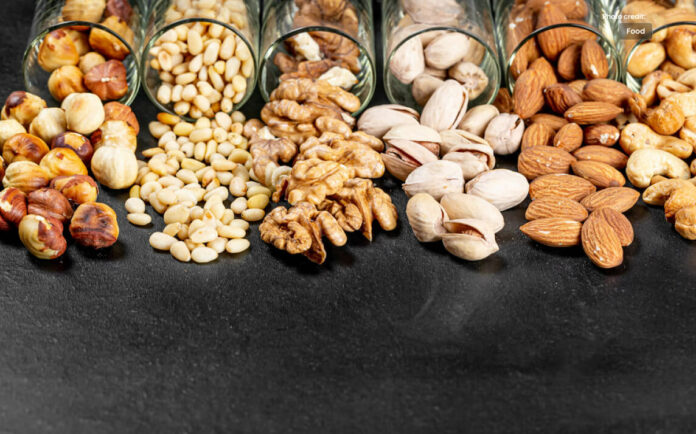Know Benefits of Eating Dry Fruits Like Peanuts and Almonds in Winter.
Dry Fruits offer Various Health Benefits in Winter, and Reduce the Risk of Chronic Diseases. Add them to your Diet for a Healthy, Balanced Diet.
Dry Fruits provide fiber, antioxidants, vitamins, minerals, proteins and healthy fats to the body.
Many people like to eat dry fruits in cold weather.
So know the benefits of eating these nuts that most people love to eat in this season.
So know the benefits of eating these dry fruits that many people like to eat in this season.
Peanut:
Peanuts are rich in protein, fat, and fiber, and best of all, this type of fat is considered to be healthy, lowering cholesterol levels.
Along with this, peanuts are also a good source of magnesium, folate, vitamin E, copper, calcium, iron, zinc, phosphorus, vitamin B3, vitamin B1, vitamin B6 and vitamin B2.
Research reports suggest that peanuts may be as beneficial for heart health as walnuts and almonds.
Similarly, protein-rich foods keep you feeling full longer, and peanuts are high in protein.
It helps in reducing body weight.
Research reports have also shown that eating peanuts reduces the risk of developing type 2 diabetes.
Peanuts are a good source of fiber, which improves digestion and reduces body swelling.
Being rich in vitamin B3, peanuts are also beneficial for skin health.
Eating peanuts also reduces the risk of dementia.
Eating peanuts lowers the risk of heart disease and enhances heart health, which benefits mental health as well, according to a study.
Pistachios:
Eating 28 grams of pistachios provides the body with 159 calories, 8 grams of carbohydrates, 3 grams of fiber, 6 grams of protein, 13 grams of fat, potassium, phosphorus, vitamin B6, copper, vitamin B1 and manganese.
The highlight of this ghee is vitamin B6 which helps in controlling various body functions including blood sugar.
Pistachios are rich in fiber and this nutrient is very important for the digestive system.
Eating pistachios can also help prevent heart disease.
Antioxidants in pistachios lower blood cholesterol levels while stabilizing blood pressure, thereby reducing the risk of heart disease.
Walnut:
Walnuts contain components such as fat, fiber, protein, carbohydrates, potassium, vitamin E, melatonin and polyphenols.
Also, walnuts are a good source of omega-3 fatty acids.
A study published in General Nutrition found that eating walnuts lowers blood cholesterol levels.
A study published in the Journal of the American Heart Association found that the fats in walnuts help reduce high blood pressure.
Although walnuts are quite high in calories, research reports suggest that walnuts can help in weight loss.
Various ingredients like fiber and protein in it help in this regard.
Nutrients in walnuts increase the body’s energy which helps to stay alert throughout the day.
A study found that eating walnuts slows down the rate of dementia.
The ingredients in walnuts promote the growth of healthy bacteria in the gut.
Almonds:
The habit of eating almonds reduces the level of harmful LDL cholesterol in the body and increases the level of healthy HDL cholesterol.
Almonds are loaded with anti-inflammatory and antioxidant properties that also reduce the risk of heart diseases.
Eating almonds also lowers blood pressure levels, which further protects against heart disease.
Although almonds are high in calories, eating this nut helps in reducing the risk of weight gain and obesity.
Almonds contain a number of powerful antioxidants, especially vitamin E.
Vitamin E protects cells in the body from oxidative stress.
Several research reports have found that vitamin E consumption reduces the risk of heart disease, Alzheimer’s and cancer.
Almonds also contain nutrients like calcium and phosphorus that improve bone health and reduce the risk of fractures.
Recent research reports indicate that almonds protect the health of the esophagus, a healthy digestive system, a better immune system and a stronger body.
Read Also this: 8 Unhealthy Foods That Affect Mental Health




